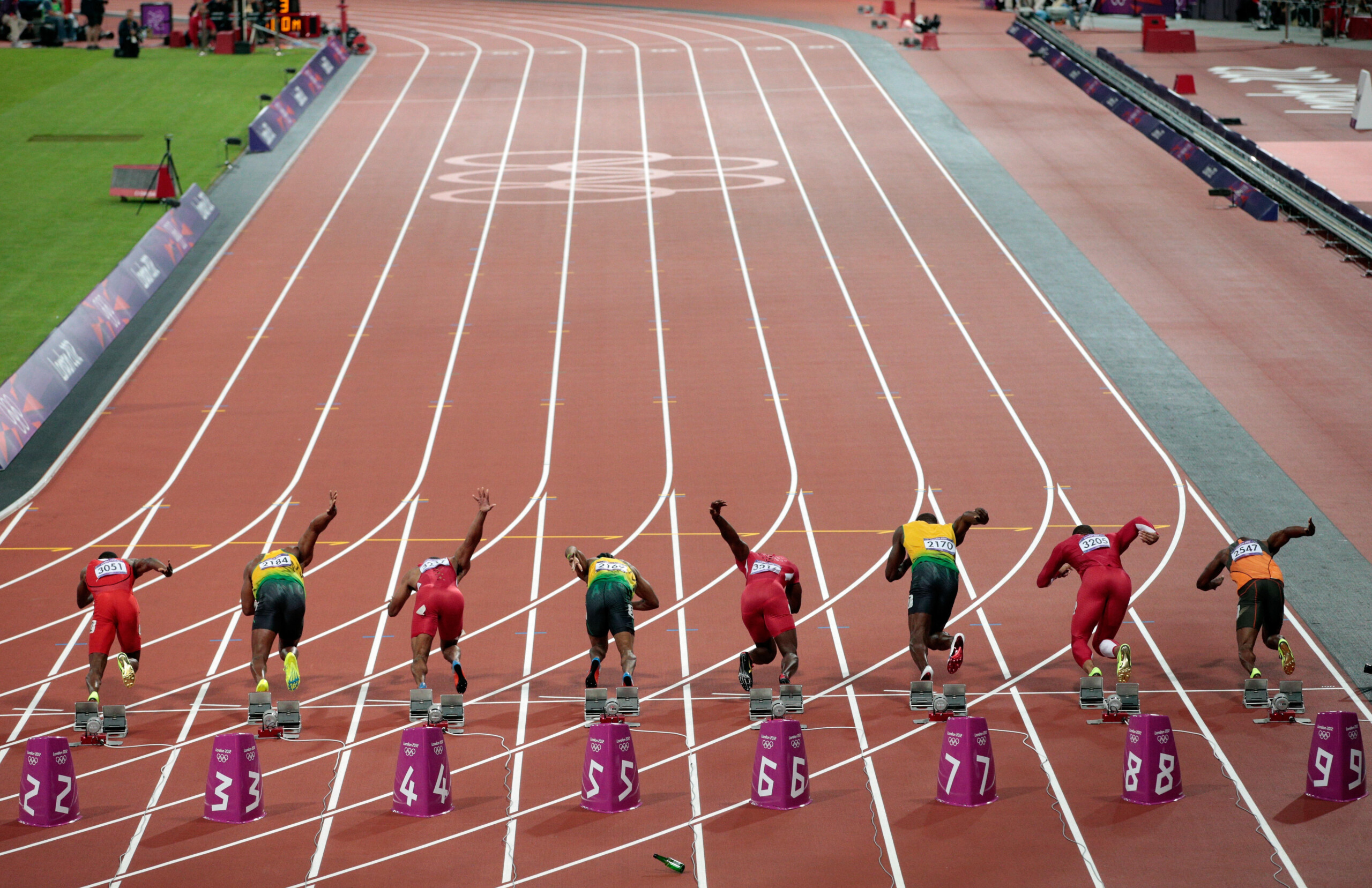Linear motion is movement in a straight line. Our body produces forces that cause angular motion of our joints that are then combined to cause linear motion of our bodies. This is known as general motion. An example of linear motion in sport is a ball moving in a straight line, or when an athlete, such as a downhill skier, holds a particular body position as they move in a straight line. Another example is a swimmer when the glide off the wall. You can determine if the motion is linear by drawing lines connecting each body part between the start and finish if the lines are the same length it is linear motion.
When it comes to performance most motion is general (a mix of linear and angular) since motion is created by the angular movement of the limbs around their joints. This does not change the fact that the 100m sprinter needs to run the shortest distance possible in the race, with is a straight line. Therefore, the more linear their motion, the better their performance. The same can be applied to sports such as swimming and ski jumping. In these sports the better the athlete can maintain linear motion the better their performance will be (even if their motion is general).


